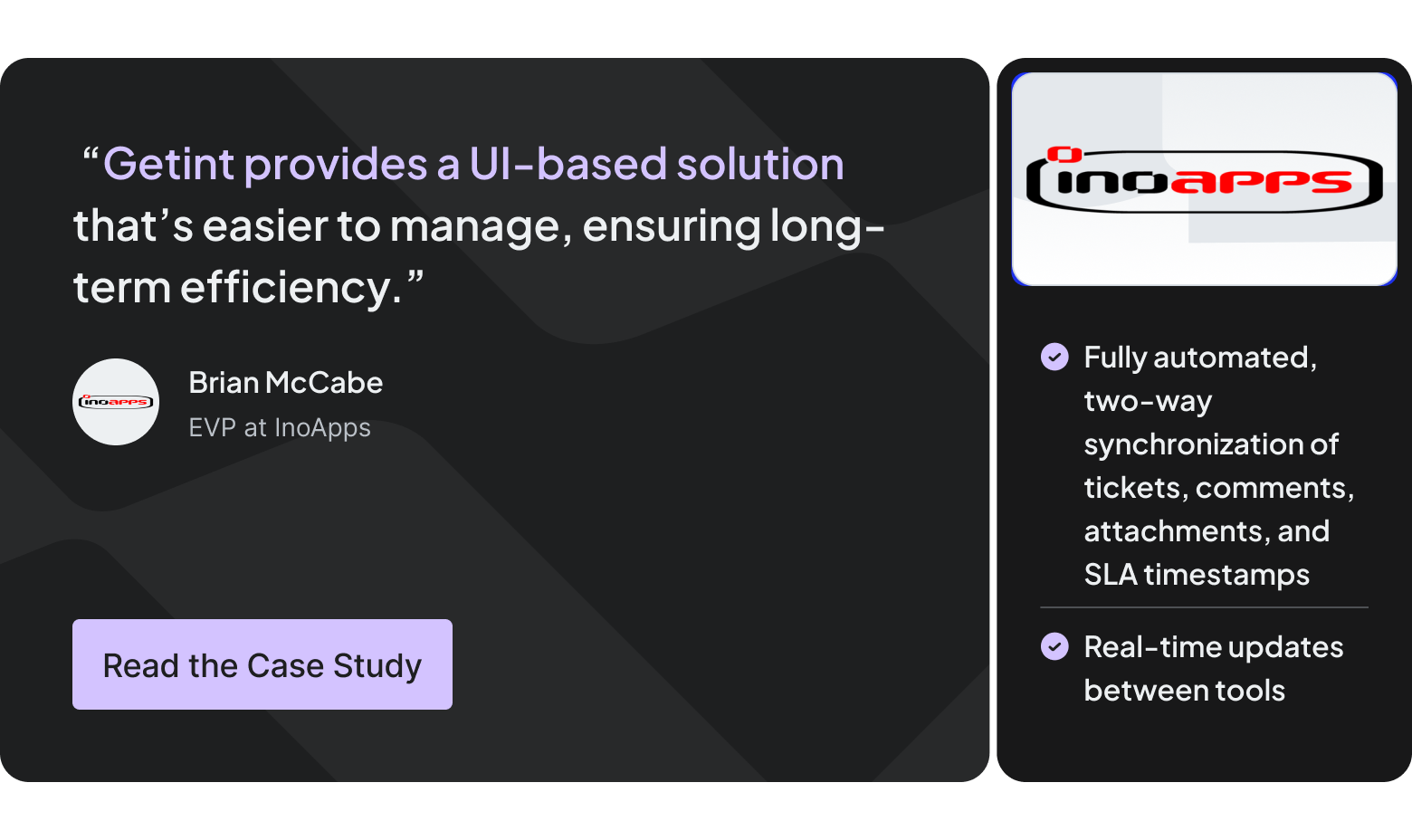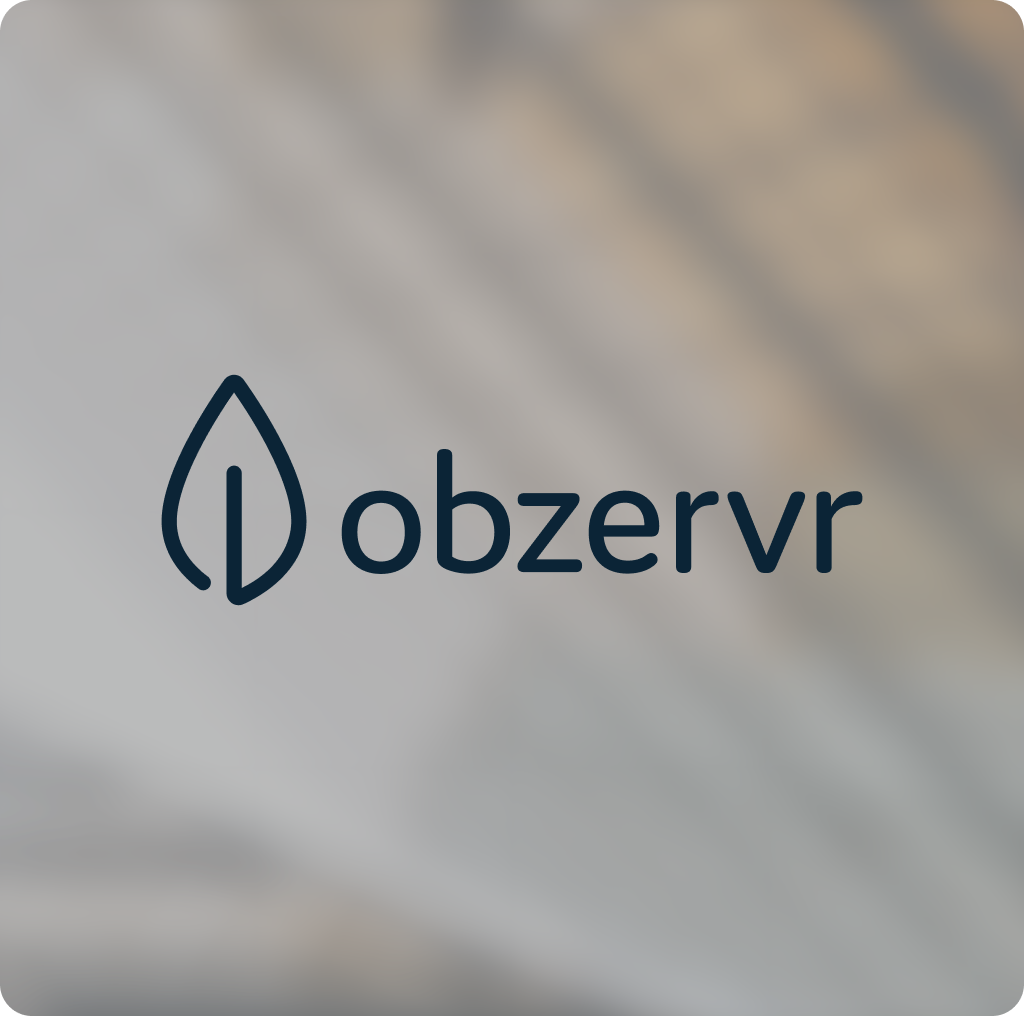Introduction: The Era of Connected Data
Every organization runs on multiple data sources. But while we’re producing more data than ever, most of it lives scattered across CRMs, service desks, product platforms, spreadsheets, and analytics tools that rarely talk to each other.
The result? Delayed insights, duplicated work, and decisions based on incomplete information.
Data connectivity changes this reality. It’s the foundation that lets information flow securely and seamlessly between systems — no matter whether those systems are cloud-based, On-Premise, or somewhere in between.
From SaaS applications to internal databases, connected data ecosystems help teams:
- share information instantly,
- maintain consistent context across workflows, and
- build real-time visibility into operations.
In this guide, we’ll explore how data connectivity works, why it’s critical for scalable business performance, and how companies can achieve it through modern data connectivity solutions like Getint — platforms built to connect systems securely and intelligently.
What Is Data Connectivity?
At its simplest, data connectivity refers to the ability of software systems to communicate and exchange information efficiently. It’s what ensures that structured and unstructured data — from SQL databases to chat logs — flows reliably between applications.
When your service desk syncs customer issues from Jira to ServiceNow, or when a sales dashboard pulls real-time figures from Salesforce, you’re witnessing data connectivity in action.
Data Connectivity vs. Data Integration
The terms data connectivity and data integration are often used interchangeably, but they describe different layers of the same system.
Connectivity builds the bridge; integration gives the bridge a purpose. Without reliable connectivity, integration projects stall but without integration, connectivity remains a raw data pipe with little business value.
The Role of APIs and Middleware
Modern connectivity depends on APIs (Application Programming Interfaces) — standardized endpoints that define how systems exchange data. APIs allow one tool to “ask” another for information using consistent, secure rules.
Between those endpoints often sits middleware or an iPaaS (Integration Platform as a Service), which manages the heavy lifting: handling authentication, retries, and message transformations so data keeps moving even when individual systems change.
Example: Imagine a support team using ServiceNow while developers work in Jira. Without connectivity, tickets are manually copied between systems. With it, a single integration keeps both tools in sync — status updates, comments, attachments, and all.
That’s data connectivity at work: two platforms, one shared source of truth.
Key Takeaway: Data connectivity isn’t about building new data — it’s about letting the data you already have flow where it’s needed.
Why Is Data Connectivity Important
Understanding the importance of data connectivity helps organizations see how real-time information exchange supports better decisions and stronger collaboration.
Breaking Down Data Silos
Most companies grow through new tools, not fewer. Each team selects its own stack, creating disconnected pockets of information. These data silos block collaboration and hide valuable insights.
By linking systems through seamless connectivity, teams share context instantly — marketing sees what support resolves, engineering understands what customers report, and leadership gains a 360° view of operations.
Enabling Smarter Decisions
When systems are connected, data analysis stops being a once-a-quarter report and becomes an ongoing capability.
Organizations can analyze data from multiple sources together:
- Support ticket patterns reveal product gaps.
- Sales data aligns with marketing campaigns in real time.
- Performance metrics update live on dashboards instead of weekly exports.
This fusion of information leads to actionable insights and faster, evidence-based decision-making.
Example: A SaaS company connects its Jira backlog with Power BI. Engineers and product managers instantly see how many customer-reported bugs remain open, how long they take to resolve, and which module causes the most incidents — all without manual reporting.
Boosting Operational Efficiency
Disconnected systems mean duplicated effort: re-entering the same data, reconciling mismatched fields, chasing missing updates. Seamless data connectivity removes that friction. Once connections are live, data flows automatically, improving operational efficiency and freeing teams to focus on innovation, not administration.
This also ensures smoother business processes: escalations move instantly between IT and development, customer records sync across tools, and reports pull the latest figures automatically.
Protecting Data Security and Integrity
Connectivity isn’t just about speed — it’s about trust. When different systems exchange information, data integrity must be maintained so that every change is accurate, traceable, and secure.
That’s why modern platforms include:
- Encryption in transit and at rest
- Access controls to limit who can read or modify data
- Multi-factor authentication (MFA) for administrative actions
- Logging and auditing for compliance evidence
Together, these features minimize data breaches and preserve consistency across the ecosystem.
Key Takeaway: True connectivity doesn’t just move data — it moves it securely, consistently, and compliantly.
How Data Connectivity Works
Behind every seamless data flow sits a mix of technologies that move, translate, and secure information. Knowing how these elements fit together is what turns “connectivity” from a buzzword into a practical capability.
The Core Components
- Application Programming Interfaces (APIs) – the highways of data exchange. They let one system request or send data to another through structured endpoints. GraphQL and REST APIs are now standard, enabling real-time and secure calls between apps.
- Database Management Systems (DBMS) – the engines that store and retrieve structured and unstructured data. A DBMS ensures that when you access data from multiple tools, it’s accurate and consistent.
- Data Transfer Protocols – methods like HTTPS, SFTP, or message queues guarantee reliable delivery. They manage retries, encryption, and order of messages.
- Integration Middleware / iPaaS Platforms – the connective tissue. These platforms orchestrate workflows, manage authentication, and perform data transformation so systems with different schemas still understand each other.
- Cloud and Data Warehouse Layers – where large-scale storage and analytics happen. They consolidate data from various sources, often blending operational and historical records into one repository.
Together, these components ensure organizations can smoothly exchange data while maintaining performance and security.
The Role of Real-Time Connectivity
Static data exchange is no longer enough. Businesses now depend on real-time data, where updates in one tool trigger instant synchronization elsewhere.
Example: When a high-priority incident is logged in ServiceNow, it automatically creates a linked issue in Jira Software. As engineers update Jira, ServiceNow reflects those changes immediately — no emails, no manual copying, no lost context.
This real-time connectivity shortens feedback loops, accelerates resolution times, and keeps information accurate across departments.
Security Layers Behind Modern Connectivity
Every connected system increases the surface area for risk. That’s why robust solutions implement multiple security layers:
- Encryption in transit and at rest to secure payloads.
- Access controls and roles to enforce least-privilege principles.
- Multi-factor authentication for admin and API access.
- Audit logs and alerts to detect anomalies early.
Advanced platforms even integrate AI-based threat detection, flagging unusual data flows before they escalate.
Key Takeaway: Reliable connectivity is built on trust. If data can’t move securely, it shouldn’t move at all.

Common Data Connectivity Challenges
Even with strong architecture, organizations face recurring obstacles. Understanding them — and how to mitigate each — is essential.
The Hidden Cost of Manual Workarounds
Teams often patch gaps by exporting spreadsheets or duplicating fields between systems. These shortcuts create invisible costs: time lost, errors introduced, and compliance risk increased.
Replacing them with seamless data connectivity eliminates shadow processes and ensures a single version of truth.
Why Legacy Systems Still Matter
Many industries — finance, healthcare, manufacturing — still depend on On-Prem or older systems that weren’t built for modern API communication. Yet these systems store mission-critical information.
A successful connectivity plan doesn’t ignore legacy; it bridges it. Platforms offering hybrid connectivity (cloud + on-prem) allow data to move without compromising security or compliance.
Key Takeaway: The goal isn’t to replace legacy systems overnight — it’s to connect them intelligently so modernization happens safely.
Building a Robust Data Connectivity Strategy
Technology alone doesn’t guarantee success. Strategy ensures that data connections actually support business goals.
Step 1: Map All Your Data Sources
List every application, database, and data warehouse in use — plus where data enters or leaves the organization. Visualizing data movement highlights redundancy and risk.
Step 2: Define Integration and Governance Goals
Clarify why each connection exists: faster reporting, automated escalation, or consolidated analytics.
Then establish policies for data quality, access, and retention to keep information consistent over time.
Step 3: Ensure Efficient Data Exchange
Select technologies that provide efficient data exchange with built-in retry logic, real-time sync, and monitoring. Avoid brittle custom scripts that break whenever a vendor updates an API.
Example: A financial services team integrates Salesforce with its data warehouse. APIs push transaction data every five minutes; if the warehouse is offline, the middleware queues requests and resends once available — zero data loss.
Step 4: Prioritize Security and Compliance
Integrate security early. Apply access controls, encryption, and periodic audits. For regulated industries, ensure data residency aligns with local laws and that each vendor meets frameworks like SOC 2 Type II or ISO 27001.
Step 5: Empower Self-Service Analytics and Visualization
Connectivity reaches full value when teams can analyze data independently. Integrate self-service analytics tools so non-technical users can create dashboards, run queries, and transform raw data into valuable insights.
Step 6: Monitor, Optimize, and Scale
Use centralized dashboards to track sync health, latency, and failure rates. As your organization grows, use proactive monitoring and alerts to identify sync issues before they impact operations.
Key Takeaway: Connectivity isn’t a one-time setup — it’s a continuous cycle of optimization and governance.
How Getint Enables Seamless Data Connectivity
While theories explain why data connectivity matters, Getint shows how it works in real enterprise conditions.
Getint is a two-way, secure, and scalable integration platform built to connect tools like Jira, ServiceNow, Azure DevOps, Monday.com, Salesforce, and more — allowing organizations to synchronize data effortlessly across departments, partners, and even entire ecosystems.
Most integration tools struggle once environments grow more complex — hybrid setups, strict security policies, or multiple toolchains. Getint was designed for exactly these conditions.
- Two-way synchronization: Every update, comment, and attachment stays aligned across tools.
- Hybrid deployment: Works in cloud, on-prem, and air-gapped environments — critical for regulated industries.
- Robust field-mapping engine: Supports deep customization and scriptable transformations without breaking usability.
- Predictable pricing model: Simple, per-connection licensing keeps scaling transparent and cost-effective.
- Enterprise-Grade Security: Connectivity without security is chaos. Getint embeds enterprise-grade protection at every layer.
For companies operating under GDPR, CCPA, or SOC 2 Type II, Getint’s On-Premise option ensures that sensitive data never leaves the organization’s controlled environment.
Key Takeaway: Security and flexibility aren’t trade-offs — Getint delivers both by design.
Built for People, Not Just APIs
Getint’s visual mapping interface empowers both technical admins and non-technical managers.
- IT admins get advanced logging and script control.
- Business users get guided onboarding, templates, and clear error messages.
This approach turns integration from a specialist’s task into an organizational capability — helping everyone achieve seamless data connectivity without relying on heavy development cycles.
The Business Impact
Getint’s approach drives measurable outcomes:
- Operational efficiency: Eliminates double entry and manual escalation.
- Data integrity: Guarantees that records match across tools in real time.
- Compliance confidence: Meets residency and audit requirements.
- Scalability: Handles hundreds of active connections without performance loss.
Thousands of organizations — including SKODA, Deloitte, and Airbus — use Getint to keep critical workflows synchronized, secure, and audit-ready.
Key Takeaway: Getint turns connectivity into a growth engine — one secure connection at a time.
Case Study: How InoApps Connected Jira, Zendesk, and ServiceNow with Getint

In 2023, InoApps, a global Oracle consultancy, used Getint to connect Jira Service Management, Zendesk, and ServiceNow.
The company had faced SLA delays and manual ticket duplication across systems.
With Getint’s secure, no-code data connectivity solution, InoApps automated real-time synchronization of tickets, comments, attachments, and SLA fields — without client-side installation. This use case demonstrates what’s possible when secure, scalable data connectivity replaces manual work — a principle any organization can apply.
Read a full case-study to discover the journey of this success.
Conclusion: Achieving Data Connectivity
Data connectivity plays a defining role in how organizations operate, innovate, and grow. It bridges silos, fuels analytics, and turns scattered information into unified intelligence.
But achieving it requires more than technology — it requires trust, governance, and a secure architecture that scales with business change.
That’s what platforms like Getint deliver:
- Secure data connectivity that protects every action.
- Operational efficiency through automation and real-time sync.
- Scalability and compliance across cloud and on-prem environments.
In a world where every decision depends on data, the organizations that master connectivity will lead the next decade of digital transformation.

























